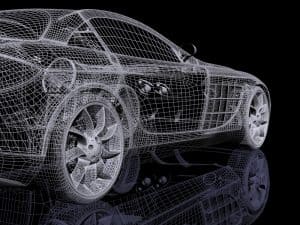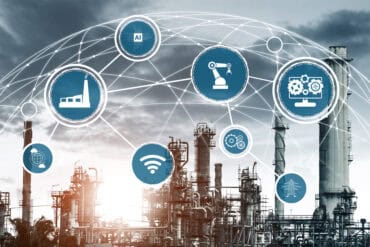
Digital twins are already in use across a number of sectors, including construction, energy, healthcare, automotive, and aerospace.
The world is waking up to the possibilities offered by digital twins, or real-time, virtual facsimiles of physical objects or processes. Digital twins are even playing a role in crucial vaccine development.
The technology is forecast by Markets & Markets to grow 15-fold from $3.1 billion in 2020 to $48.2 billion by 2026 at a 58% CAGR. Venture capital money is also flowing in this direction: an analysis out of Pitchbook, last year, there was $103.8 million of capital invested from just 53 investors into the digital twins technology start-ups.
See also: Digital Twins and the City
Many use cases for digital twins emerge
Digital twins are already in use across a number of sectors, including construction, energy, healthcare, automotive, and aerospace sectors. Examples of digital twins in action include the following:
Pharmaceuticals: Digital twins are proving to be instrumental in vaccine manufacturing — which, over the past year, has proven to be a critical process for global healthcare. Pharmaceutical giant GlaxoSmithKline, working with IT firm Atos and engineering firm Siemens, has piloted a digital twin of the manufacturing process for vaccines, according to Fraiser Kansteiner, writing in Fierce Pharma. “When the team hooks the digital twin into the real-world manufacturing process, physical sensors send data back to the twin. Then, the twin provides simulated insights to the control system to keep things running smoothly.
Essentially, the twin serves as a computer-simulated experiment of a real-time process, allowing the manufacturing team to digitally observe what’s happening.”
Seaports: One major imitative underway is the Port of Rotterdam, the largest seaport in Europe, in which “reality is being captured, and the future is being designed with 3D virtual models, or digital twins,” writes Ian Koeppels in Fast Company. In Rotterdam, digital twin technology is employed to guide autonomous vessels that “pull in to load and unload containers filled with the goods many rely on every day.”
Airports and train stations: “Airports and railway station operators are telling travelers where they are within terminals and the best routes to get where they need to go without having to hunt for an information desk or static map with a ‘you are here’ dot,” Koeppels writes. “In each case, digital twins take in vast amounts of data, including streams from Internet of Things sensors, to monitor current operations and historical behavior, and plan for what may happen next. When built with geospatial technology, or a geographic information system, digital twins are immersive, multidimensional, and location intelligent— able to show in detail what’s happening, when, and where, and can be used to explore or predict future states.”
Auto manufacturers: “The automotive sector will use this technology to analyze the performance of vehicles and make desired changes,” according to a report from Graphical Research. “It will help companies make improvements in the overall design and efficiency of the vehicles as well. Use of digital twin technology even helps predict potential risks in vehicles and provides solutions for the same.”
Manufacturing design: “The demand for detecting faults beforehand and making significant improvements in the design and performance of the products has stimulated the need for using digital twins,” according to Graphical Research.
Aerospace and defense: This sector “will increasingly adopt digital twin technology through 2026. One of the main reasons for this substantial rise in demand is the need to reduce casualties and increase the efficiency of military weapons,” Graphical Research reports. “The data received from real-time machinery helps the advanced technology in detecting potential faults in these weapons and even helps in predicting the exact time when maintenance will be required. The aircraft industry is using digital twins of real airplanes and feeding them with real-time data to improve the reliability of their functioning and reduce the overall cost of maintenance. They effectively help in enhancing the performance of the airplanes as well.”




























